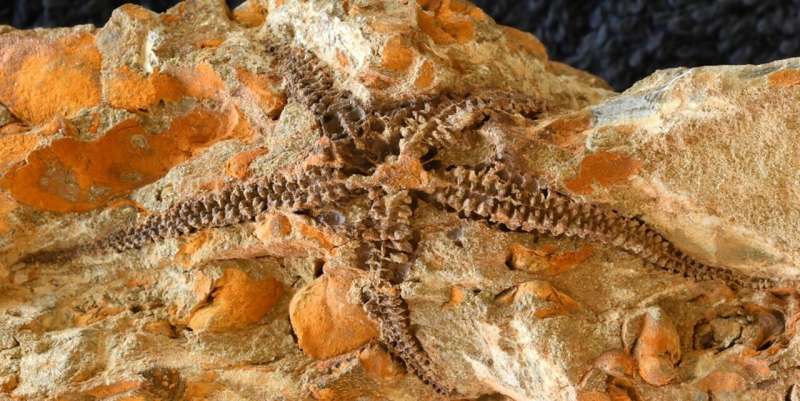November 6, 2023 report
This article has been reviewed according to Science X's editorial process and policies. Editors have highlighted the following attributes while ensuring the content's credibility:
fact-checked
peer-reviewed publication
trusted source
proofread
Oldest known samples of brittle stars from supercontinent Gondwana discovered in South Africa

A small team of paleontologists with members from Rhodes University, in South Africa, the National Museum of Natural History, Luxembourg City, and the University of Oxford, in the U.K., has discovered the oldest known brittle star samples from the supercontinent Gondwana at a dig site in South Africa. In their paper published in the open-access journal PLOS ONE, the group describes where the samples were found, their condition, and where they fit on the ophiuroid family tree.
Brittle stars are often confused with starfish—they both have five arms attached to a central "body." Brittle stars have much longer arms though (up to 60 cm), which are also much thinner. Also, the arms on most species of brittle stars are whip-like, rather than the triangular type found on starfish. Brittle stars use their long arms to grab food as it falls from above or to churn seabed sediment for food.
Brittle stars are echinoderms of the class Ophiurodea, which is why they are referred to as ophiuroids. They are divided into two main historical categories as well: modern and archaic. Until recently, researchers believed that the archaic species went extinct before the arrival of modern species. But fossil finds (mostly in the northern hemisphere) have shown that the two co-existed for a time during the Triassic. Thereafter, the archaic species declined in numbers due to an increase in predators during the mid-Paleozoic Marine Revolution.
In this new study, the research team found natural molds of two species of archaic brittle stars in a part of the Baviaanskloof Formation, both of which they describe as in near-perfect condition and one of which is a new species—they have named it Krommaster spinosus.
The molds were found to be approximately 410 million years old, which makes them the oldest-known brittle star samples found that originated from what was Gondwana, the ancient supercontinent. To better understand their morphology, the research team made silicone replicas from the molds. Their findings may help to better understand the diversification of brittle stars, as almost all other evidence has come from rocks found near the equator.
More information: Caitlin Reddy et al, Earliest known ophiuroids from high palaeolatitude, southern Gondwana, recovered from the Pragian to earliest Emsian Baviaanskloof Formation (Table Mountain Group, Cape Supergroup) South Africa, PLOS ONE (2023). DOI: 10.1371/journal.pone.0292636
Journal information: PLoS ONE
© 2023 Science X Network





















